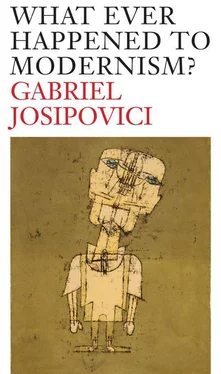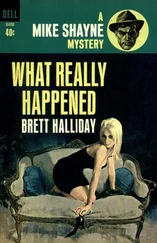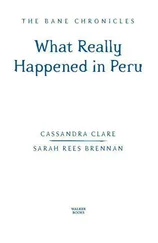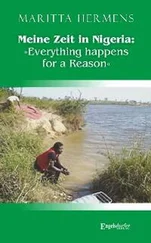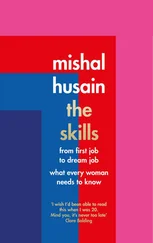The parties could not agree and could not even devise a face-saving formula. As Heller points out, the dispute was not even new, since theologians had been arguing about the precise nature of transubstantiation for centuries. But it had taken on a new importance and after the Marburg disputation there was no going back, for theology or for Western man. ‘Of course,’ says Heller,
I do not confuse a theological controversy with an exercise in aesthetic theory. But I do suggest that at the end of a period that we rather vaguely call the Middle Ages there occurred a radical change in man's idea of reality, in that complex fabric of unconsciously held convictions about what is real and what is not. This was a revolution comparable to that earlier one which Nietzsche called the victory of the Socratic mind over the spirit of Dionysian tragedy. And indeed both victories saddled us with the unending bother of aesthetic philosophy.
The Marburg debate brings out the fact that the Protestant revolution was not one thing which in a single moment changed the face of European politics, religion and thought. The world did not become disenchanted overnight. It was, rather, the coming out into the open of doubts and confusions that had not, until then, found a clear voice. As Luther's stance at Marburg suggests, the ‘medieval’ and the ‘modern’ were to coexist for a long while yet. But the fabric of thought was changing. Take the Reformers' polemics against Purgatory. The idea that there was a middle state ‘in which’, as a recent historian has put it, ‘those whom God loved would have a chance to perfect the hard slog towards holiness that they had begun so imperfectly in their brief earthly life’ was nowhere to be found in the Bible, and by the fifteenth century, when rich nobles could set up chantry chapels and hire priests to sing daily masses in perpetuity to help speed them through Purgatory as quickly as possible, the whole doctrine had begun, to some, to seem meaningless and mechanical. But the idea of men on earth, by their devotions, helping those who had died and earning themselves benefit from their labours in the eyes of God was one which would have been understood by most so-called primitive peoples, for it is based on the belief that there is a profound link between groups of human beings and between the living and the dead. In the Choephori of Aeschylus, the second play of his trilogy about the House of Agamemnon, known as the Oresteia , Agamemnon's two surviving children, Electra and Orestes, egged on by the chorus, pray at the tomb of their murdered father for him to help them avenge his fate on the culprit, their mother. At the climax of this extraordinary scene Orestes cries out to his father:
And do not wipe out this Pelopid seed; for then [i.e. if you do suffer them to be wiped out], even though dead, you will not have perished. For to a dead man his children are the fame that preserves him; like corks they bear the net up, keeping safe the spun flax that stretches up from the depths.
(ll.503–7, tr. Alan H. Somerstein)
For Aeschylus, the unit is not the individual but the family, the House, here defined by reference to the first ancestor, Pelops. Man by himself is nothing; only the family, the House, gives meaning to his life. Just as for Aristotle a little later, man is less than human if he is not functioning within a unit larger than himself, the polis or city state. When in the sixteenth century Reformers everywhere rounded on the doctrine of Purgatory, they were, like Zwingli in his argument with Luther, absolutely right in their own eyes; what they were attacking was nonsense, it was a form of superstition. But what they could not see was that their new clear-sightedness was the result of the disappearance of an older way of looking at things which was itself dependent on older forms of social organisation. In the nineteenth century scholars were in no doubt at all that the Reformers were right every time, that they were finally waking up to the absurdities of superstition. In the twentieth century, though voices like those of Keith Thomas were still in the majority, there were some who were no longer quite so sure. And there were some, like Heller, who were prepared to see what had got lost in the transition as well as what had been gained, who would even see the transition as tragic. That certainly, is the stance of Thomas Mann, in the most eloquent artistic exploration of the issue, his last major novel, Doctor Faustus .
Adrian Leverkühn, the novel's composer-hero, is profoundly aware, as his friend and biographer Serenus Zeitblom is not, of the crisis that has engulfed art since the sixteenth century; Leverkühn's entire intellectual and artistic life is built out of a deep awareness of the contrast between the ‘age of cult’ and the ‘age of the individual’, that is, between the Middle Ages and what followed. Practically every page of this long novel has some remarkable critical insight based on that distinction, so, rather than following the well-trodden paths and examining again what is said in a general and philosophical way in the central chapters of the book, let me turn to a passage close to the end, where Mann/Zeitblom is attempting to describe the effect of Leverkühn's last great work, ‘ The Lamentation of Doctor Faustus ’:
The Lamentation , that is — and what we have here is an abiding, inexhaustibly accentuated lament of the most painfully Eccehomo kind — the Lamentation is expression itself; one may state boldly that all expressivism is really lament; just as music, so soon as it is conscious of itself as expression at the beginning of its modern history, becomes lament and ‘ lasciatemi morire ’ [ die Klage ist der Ausdruck selbst, man kann kühnlich sagen, dass aller Ausdruck eigentlich Klage ist, wie denn die Musik, sobald sie sich als Ausdruck begreift, am Beginn ihrer modernen Geschichte, zur Klage wird and zum ‘Lasciatemi morire’ ], the lament of Ariadne, to the softly echoing plaintive song of the nymphs. It does not lack significance that the Faust cantata is stylistically so strongly and unmistakably linked with the seventeenth century and Monteverdi, whose music — again not without significance — favoured the echo-effect, sometimes to the point of being a mannerism. The echo, the giving back of the human voice as nature-sound, and the revelation of it as nature-sound, is essentially a lament: Nature's melancholy ‘Alas!’ in view of man, her effort to utter his solitary state. Conversely, the lament of the nymphs on its side is related to the echo. In Leverkühn's last and loftiest creation, echo, a favourite device of the baroque, is employed with unspeakably mournful effect.
Thus, says Mann, when the choral music of the Middle Ages, the music of community, gives way in the Renaissance to opera, with its celebration of the individual, this is, for music, not entirely a matter for rejoicing. It is no coincidence that Monteverdi's first and greatest opera, Orfeo (1607, usually seen as the first opera tout court ), should take as its subject one of the ancient world's main legends of irreparable loss, a legend that has haunted modern artists from Rilke to Birtwistle as it haunted the Renaisssance. Like Dowland's almost contemporary Lachrymae (1605), recently so beautifully touched into life by Birtwistle in his Semper Dowland, Semper Dolens , and, like countless Renaissance sonnets, it is specifically about the loss of a beloved woman, but the reason it has exerted such a hold is clearly that, like Monteverdi's ‘Ariadne's Lament’, it is about some deeper, more primal and all-encompassing loss. The Middle Ages, of course, had their fair share of poems and songs about the loss of a loved one, but these songs have a kind of upswing and energy that belies their subject-matter. What is so extraordinary about ‘Ariadne's Lament’ and Dowland's Lachrymae is the way the music seems to enact the very loss it laments. The Middle Ages also had a central place for a story of darkness and death, the story of Christ's Passion. But that story, whether expressed in the Easter liturgy, in the miracle plays or in stained glass windows across Europe, does not stop with Christ's death on the cross. That death, terrible though it is, is but a moment in a larger story, one that will end with the Resurrection and the Last Judgement, a story the Middle Ages would have called, as Dante called his poem, a comedy, because it starts badly but ends well. When, in the sixteenth century, religion takes its inward turn, the shape of that story is lost. The world becomes a colder place.
Читать дальше
